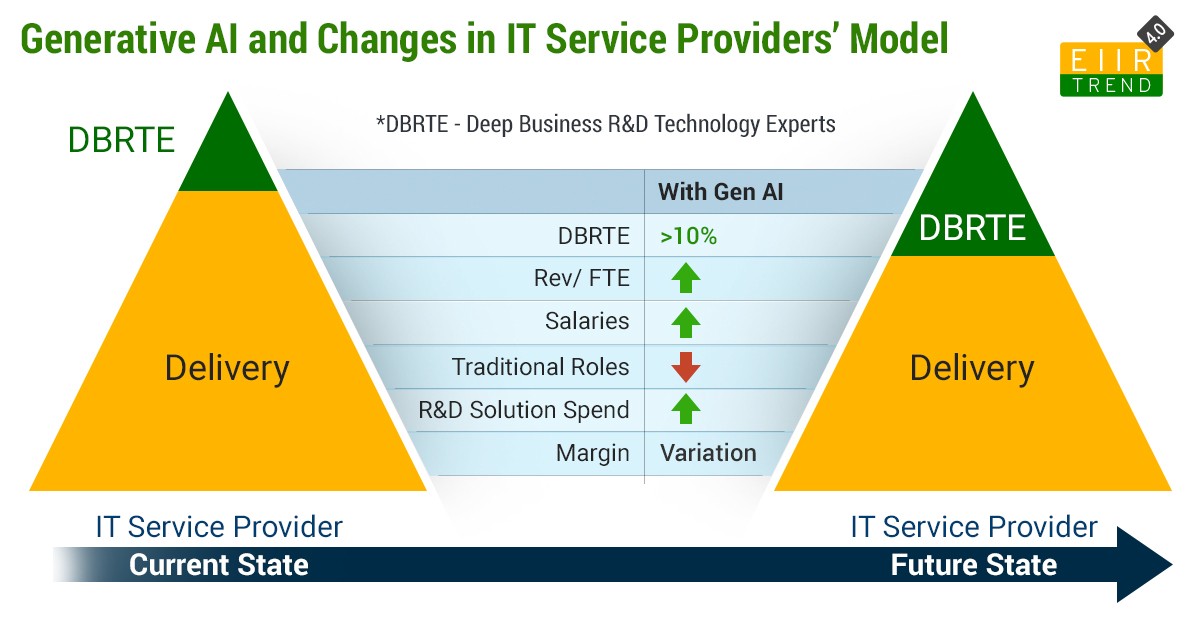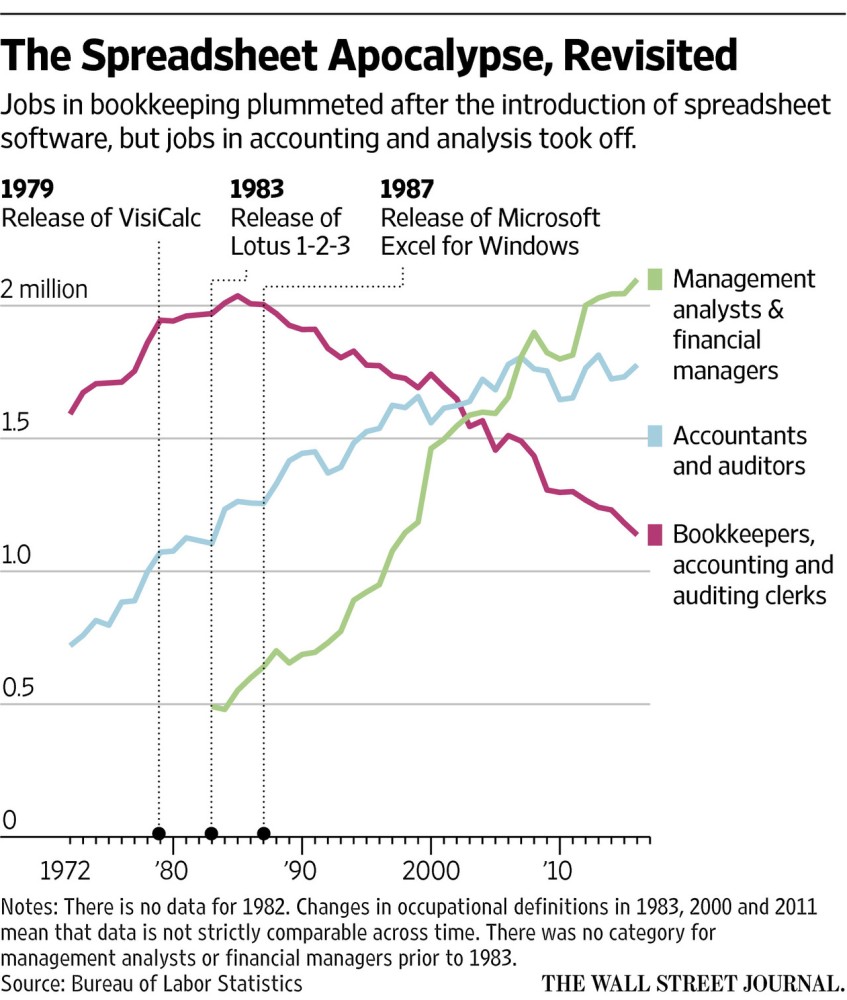By Pareekh Jain
Founder of Pareekh Consulting & EIIR Trend
If you’re wondering about the next big thing in IT services, there’s a strong likelihood that Generative AI, often referred to as GenAI, will be the answer.
Enterprises are currently engaged in discussions about the potential applications of GenAI, and IT service providers are actively investing in this area to enhance their capabilities.
The bigger question at hand is whether Generative AI will reshape the IT service provider model. Let’s delve deeper into this possibility.

What Changes Can We Expect in IT Services with Generative AI?
Early experiments with Generative AI suggest that it has the potential to enhance productivity and efficiency across many areas of the IT services value chain. These areas include code generation, testing, support processes, and more. Continuous exploration is uncovering new GenAI use cases with significant claims of increased productivity.
Consequently, it appears logical that as Generative AI scales, the demand for traditional IT services may diminish. This prompts the question of how IT service providers should adapt in response.
One critical consideration is that if Generative AI becomes prevalent in enterprises, these organizations will require substantial assistance in integrating Generative AI into their products, services, processes, and business models. This involves identifying business challenges and addressing them using Generative AI. It might encompass improving sales, reducing operational costs, managing working capital, minimizing inventory, optimizing the supply chain, boosting product or service adoption, enhancing customer experiences, implementing virtualization, and more.
This transformation also involves exploring the art of possibilities. What new capabilities can be developed in products, services, processes, or business models using Generative AI to improve business performance?
While conducting pilot projects or proofs of concept is one step, for organizations to fully harness the benefits of Generative AI at scale, their products, services, processes, and business models must evolve. This necessitates a combination of business consulting, process consulting, subject matter experts, research and development (R&D) or engineering experts, and technology architects to assist enterprises.
We refer to these experts as “DBRTE” (Deep Business, R&D, Technology Experts). They differ from delivery personnel and can be involved in consulting, presales, solution design, or internal R&D. With the support of DBRTE, service providers can help enterprises redefine their business operating models and make strategic decisions related to markets, products or services, functions or processes, pricing, manufacturing or operations, and global support or supply chains.
Of course, Generative AI projects will require technical expertise as well. The technology infrastructure across the front, middle, and back offices of enterprises must be reimagined and made adaptable to Generative AI. Enterprises will need to identify, collect, clean, and format their data to align with Generative AI requirements. This falls under the purview of data engineering. Integrating Generative AI into both on-premise and cloud software solutions will become complex due to the introduction of numerous Large Language Models (LLMs) and the associated security and data availability challenges.
IT service providers have two broad paths to choose from.
The first involves extending their current model while leaving the DBRTE components to other parties, focusing solely on technical expertise and downstream Generative AI project delivery. However, this approach may lead to a shrinking IT services market.
The alternative for IT service providers is to proactively engage in DBRTE and transform their business model. This operational model shift would involve several key characteristics:
- Consulting activities would increase, while coding, testing, and process support roles would decrease, reshaping the expertise pyramid.
- DBRTE professionals would comprise over 10% of the workforce.
- Traditional roles in coding, testing, and process support would decline.
- The price of services would rise, driven by service providers delivering more value-added work. Revenue/ FTE should increase.
- Average employee salaries would increase due to higher Revenue/ FTE.
- Greater investment in R&D, solutions, and tools.
- Margins would vary, with prices increasing, but cost management differing among service providers. It would also depend on investment plans and non-linear pricing models. Service providers will aim to maintain their current margin range.
Similarity with the Spreadsheet Revolution
History often tends to echo itself in various guises. An analogous trend unfolded in the realm of accounting and bookkeeping during the 1980s, following the advent of spreadsheets. As per the data chart featured in the Wall Street Journal, the introduction of spreadsheets led to a decline in traditional bookkeeping and accounting roles. However, it also brought about an increase in positions related to financial analysis and management.

Applying this historical parallel to the context of Generative AI (GenAI), it’s plausible that traditional roles in coding, testing, and process management may see a decrease in demand while positions in the realm of DBRTE (Deep Business, R&D, Technology Experts) could experience growth.
Bottomline: This scenario is just one of several possible outcomes, but it has the potential to positively transform the IT service model for all stakeholders involved. Indian IT companies may shift left towards more value-creating roles, actively identifying and defining customer problems in addition to providing solutions. Forward-thinking service providers should view this as an opportunity to ascend the value chain and enhance their relevance to customers. Preparing for this change should begin now and may involve:
- Investing in DBRTE (Deep Business, R&D, Technology Experts) personnel, solutions, tools, and research and development.
- Creating career paths for DBRTE professionals in otherwise sales and delivery dominant roles and career paths within IT service providers.
- Being willing to accept a short-term reduction in profit margins to invest, establish, and scale this new approach.
- Collaborating closely with strategic customers and taking on more DBRTE-driven assignments, aiming to move up or shift left within the value chain.
Change of this magnitude cannot happen overnight, but if executed effectively, it can render the IT service provider model future-proof and thriving in the Generative AI economy.
(The writer is a veteran IT consultant and a voice of repute in the engineering services space globally. This blog has been published with permission from EIIR Trend, where it appeared first)





















